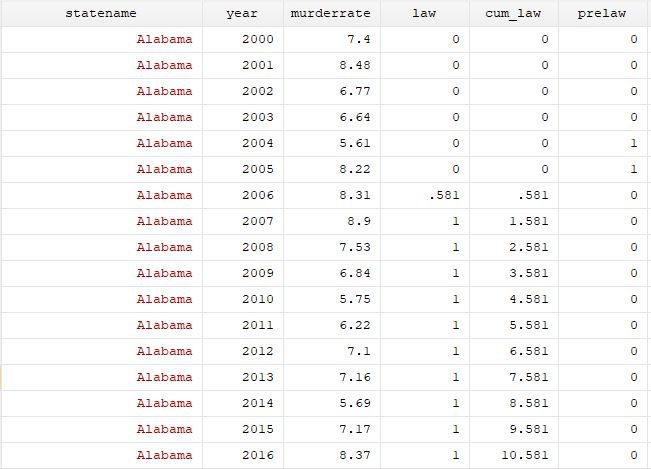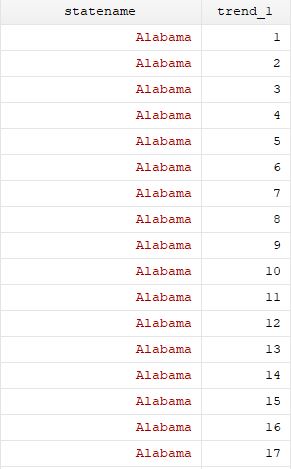Research
- Crime Categories
- Murder Circumstances
- Charges
- Murder Numbers by SHR
- Definitions of Murder
- Crime Literature
- Other Literature
- Seminars
- Journal Ranking
- Laws
- Changes in Law and Reporting in Michigan
- Citation Guides
- Datasets
Writing
Methods
- BLP
- Econometrics Models
- Econometrics Tests
- Econometrics Resources
- Event Study Plots
- Metrics Literature
- Machine Learning
Python-related
- Python Basic Commands
- Pandas Imports and Exports
- Pandas Basic Commands
- Plotting in Python
- Python web scraping sample page
- Two Sample t Test in Python
- Modeling in Python
R-related
- R Basics
- R Statistics Basics
- RStudio Basics
- R Graphics
- R Programming
- Accessing MySQL Databases from R
Latex-related
Stata-related
SQL
Github
Linux-related
Conda-related
AWS-related
Webscraping
Interview Prep
Other
Panel data modeling for the Stand Your Ground Law project
The baseline specification is very straightforward. Note that both states and years are binary variables. We have 66 regressors in total here.

The way it is implemented is:
xtset state year
qui xtreg murder law i.year [aweight=popwt], fe vce(cluster state)
Then we added region-by-year fixed effects to control for region-specific time effects. Regions are binary variables. We would like to see how different the time trends are between the baseline trend and each other region’s.

The way to implement it is:
** First, generate region-by-year fixed effects
forvalues j = 2000/2014{
gen year`j'=(year==`j') # ex: year2000 = 1 if we are in year 2000
gen r`j'1=year`j'*northeast # ex: r20001 = 1 if we are in year 2000 and in the Northeast
gen r`j'2=year`j'*midwest
gen r`j'3=year`j'*south
gen r`j'4=year`j'*west
drop year`j'
}
This way, we generate 60 variables that represent 15 years * 4 regions.
Then we put all of them into one global macro:
global region r20001-r20144
Then we add these variables as regressors:
qui xtreg murder law i.year $region [aweight=popwt], fe vce(cluster state)
Here is the structure of the regional data:

Below is how it is in the form of region by year dummies. r20003 for Alabama equals to 1 because it is the year 2000 and Alabama is in the South.

Then we controlled for time-varying factors:

Then we controlled for Ashenfelter’s dip. Namely, if there is an increased amount of murder two years prior to the law passing, the prelaw dummy would be able to capture this effect.

The structure of the prelaw dummy is:

Then we controlled for state-specific trends:

Data related to the state-specific trends. Note that it is the product of a discrete random variable (year) and a binary variable (state_i)
